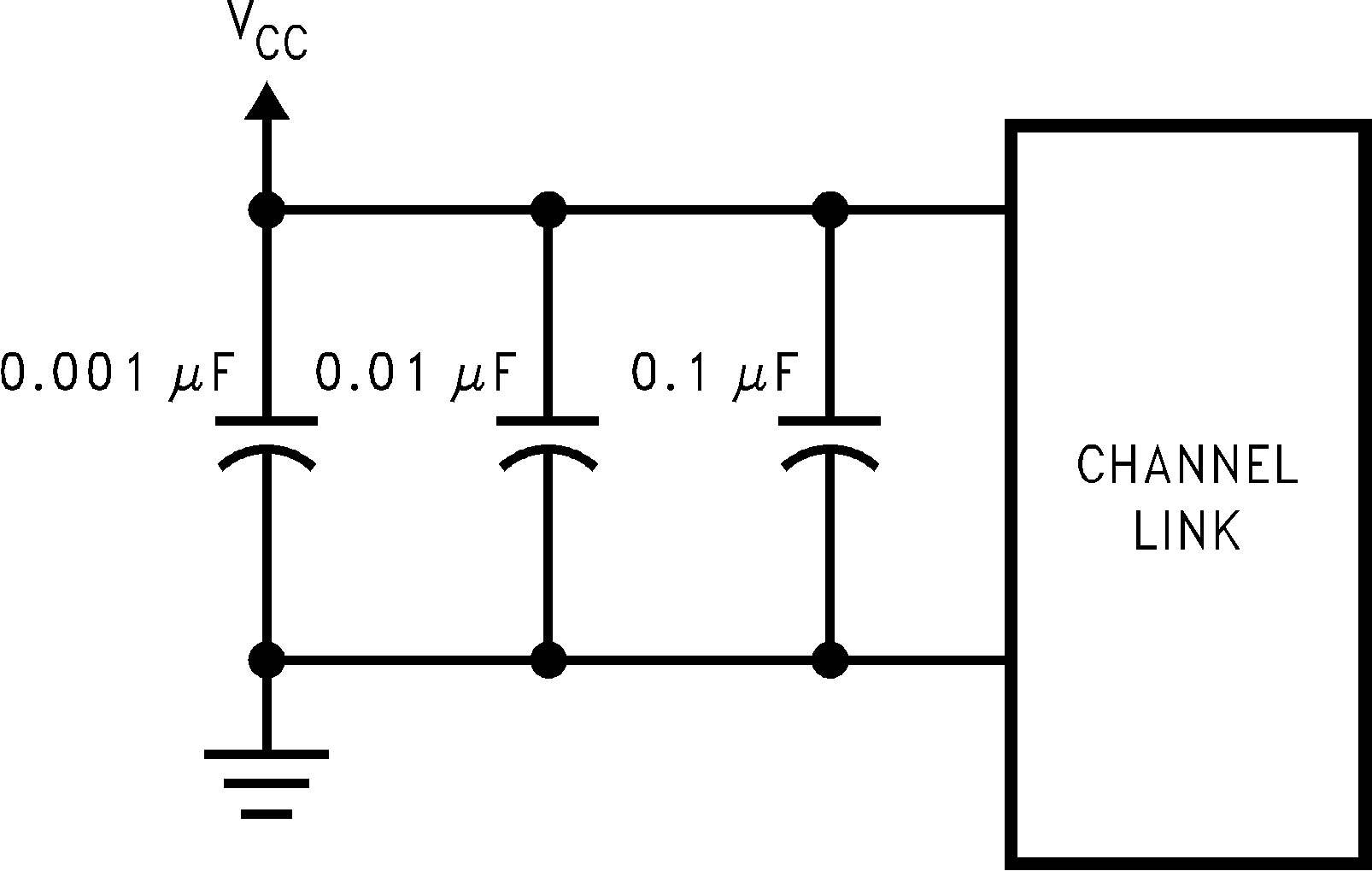ZHCSET3A November 2015 – December 2015 DS90CR286AT-Q1
PRODUCTION DATA.
9 Power Supply Recommendations
Proper power supply decoupling is important to ensure a stable power supply with minimal power supply noise. Bypassing capacitors are needed to reduce the impact of switching noise which could limit performance. For a conservative approach, three parallel-connected decoupling capacitors (Multi-Layered Ceramic type in surface mount form factor) between each VCC and the ground plane(s) are recommended. The three capacitor values are 0.1 μF, 0.01 μF and 0.001 μF. The preferred capacitor size is 0402. An example is shown in Figure 28. The designer should place bypass capacitors as close as possible to the VCC pins and ensure each capacitor has its own via to connect the ground plane. If board space is limiting the number of bypass capacitors, the PLL VCC should receive the most filtering or bypassing. Next would be the LVDS VCC pins and finally the logic VCC pins.
 Figure 28. Recommended Bypass Capacitor Decoupling Configuration
Figure 28. Recommended Bypass Capacitor Decoupling Configuration